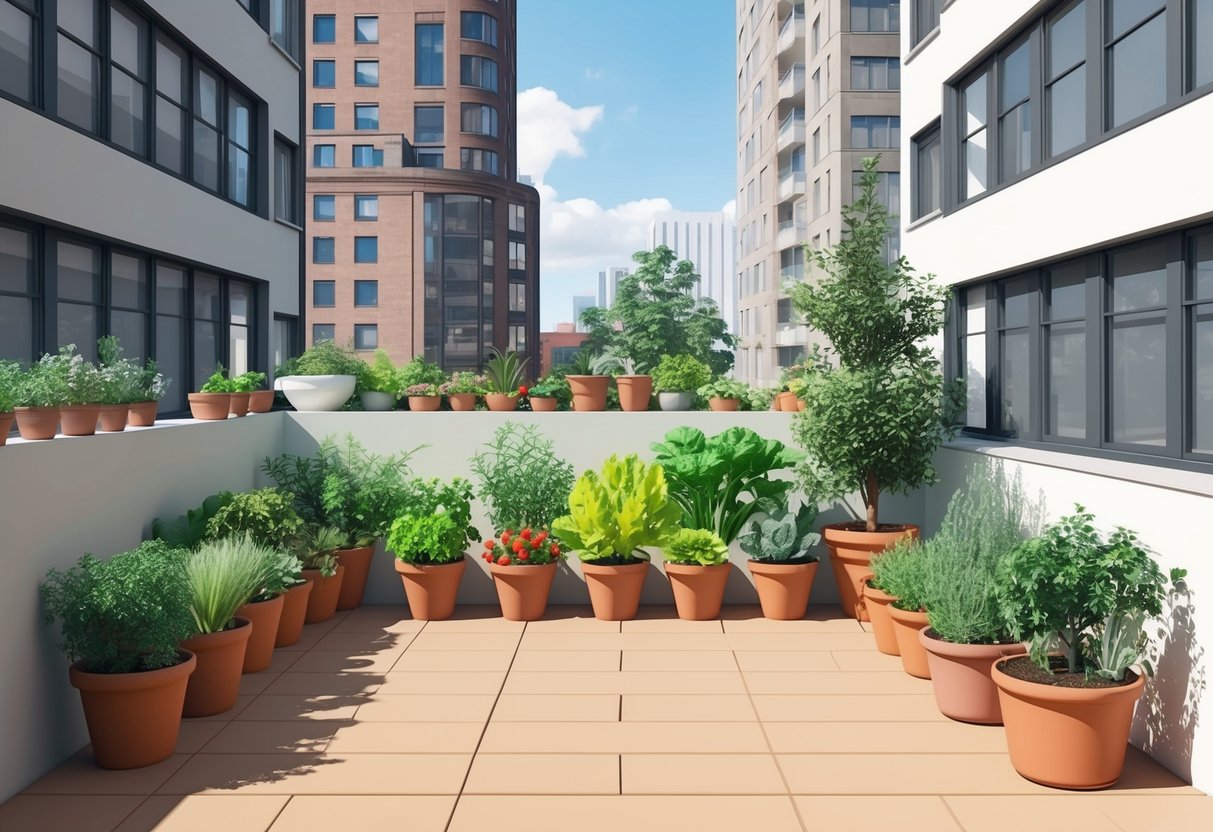
Growing Herbs for Culinary and Medicinal Uses

Herbs are some of the most rewarding plants for gardeners with limited space. Many popular herbs provide both culinary flavor and practical medicinal uses, thriving in small pots, raised beds, and containers.
Best Herbs for Small Space Growing
Certain herbs adapt exceptionally well to small gardens and containers. Basil, thyme, and oregano are favored choices due to their compact growth habits and steady yields.
Basil is especially easy to start from seeds, while thyme and oregano are hardy perennials that continue to thrive throughout the year with minimal care. Sage, parsley, and cilantro do well in slightly deeper pots, making them versatile options for window sills or balcony gardens.
Compact varieties of mint can be grown in pots to prevent their spread, while chives and dill add flavor and greenery without taking up much space. To maximize a small area, using stackable planters or tiered plant stands can allow for multiple herb types even when square footage is limited.
Tips for Continuous Harvest
Regular trimming and pinching of herb stems encourages bushier growth and prolongs productive harvests. Gardeners should focus on cutting young, tender shoots rather than older, woody stems to keep plants healthy.
Consistent light, moderate watering, and good drainage all help prevent diseases and promote robust development. Rotate the cut location each time to avoid stressing any single section of the plant.
For high-yield herbs like basil and mint, harvesting every one to two weeks is beneficial. Using deep containers for herbs such as parsley and cilantro allows roots to develop well, resulting in a steady supply of leaves for both culinary and medicinal purposes.
For more techniques on maximizing small-space herb gardening, see these practical tips.
Frequently Asked Questions

Small space gardening requires strategic choices, like picking productive, compact vegetables and using vertical methods to increase harvests. Arranging containers and using companion planting can help ensure steady yields even in tight spots.
What are the top vegetables that require minimal space and care?
Leafy greens such as lettuce, spinach, and Swiss chard thrive in small gardens and mature quickly. Herbs like basil and parsley, as well as radishes and green onions, take up little space while producing frequent harvests.
These vegetables are known for their easy maintenance and fast growth cycles, making them practical choices for beginners and limited spaces.
How can you organize a small garden to optimize plant growth and yield?
Maximizing yield in a small garden often begins with deep, nutrient-rich beds and careful plant placement. Staggering taller crops behind shorter ones ensures each plant receives adequate sunlight.
Incorporating containers and raised beds with good drainage and organic matter can further support healthy root development and steady production. For tips on optimal bed structure, see suggestions at Harvst.
Which vegetables can be grown together in a compact space to enhance productivity?
Companion planting improves productivity by pairing plants that benefit each other. For small spaces, common combinations include tomatoes with basil, lettuce with radishes, and carrots with onions.
Fast-growing salad greens can be interplanted with slower crops to ensure the most efficient use of space. Learn more about companion planting for small gardens.
What are some effective small garden design strategies for maximizing yields?
Design strategies that maximize yield in small spaces include using vertical supports like trellises and cages. Creating keyhole and raised bed gardens also helps.
Choosing compact or dwarf varieties allows for closer spacing and more efficient use of every inch. Details on designing efficient small gardens can be found at The Spruce.
How do vertical gardening techniques apply to growing vegetables in limited spaces?
Vertical gardening involves growing plants upward using supports, conserving ground area. Vining vegetables such as cucumbers, peas, and pole beans adapt well to trellises.
Stacked containers and wall-mounted planters work for herbs and leafy greens. These approaches significantly increase the overall harvest in restricted areas.
Can you recommend some high-yield vegetable varieties suitable for container gardening?
Dwarf and bush types of tomatoes, peppers, and zucchini work very well in containers.
Leafy greens like arugula and pak choi are prolific and quick to regrow after harvest.
Green onions and baby carrots can deliver steady crops in pots or window boxes.
For practical examples, see recommendations at PlantVillage.